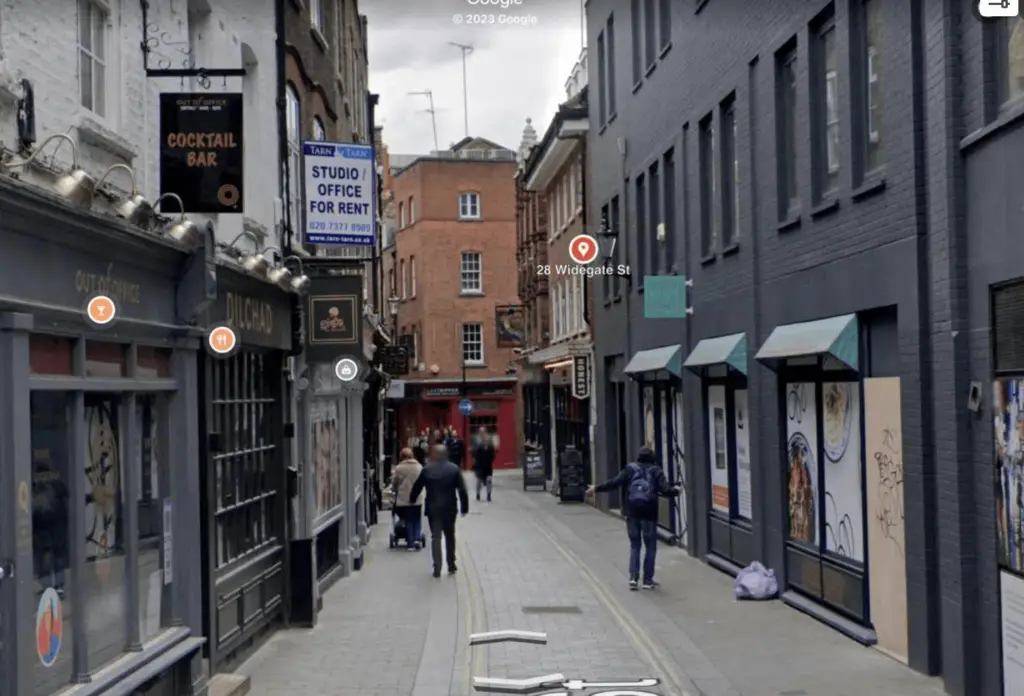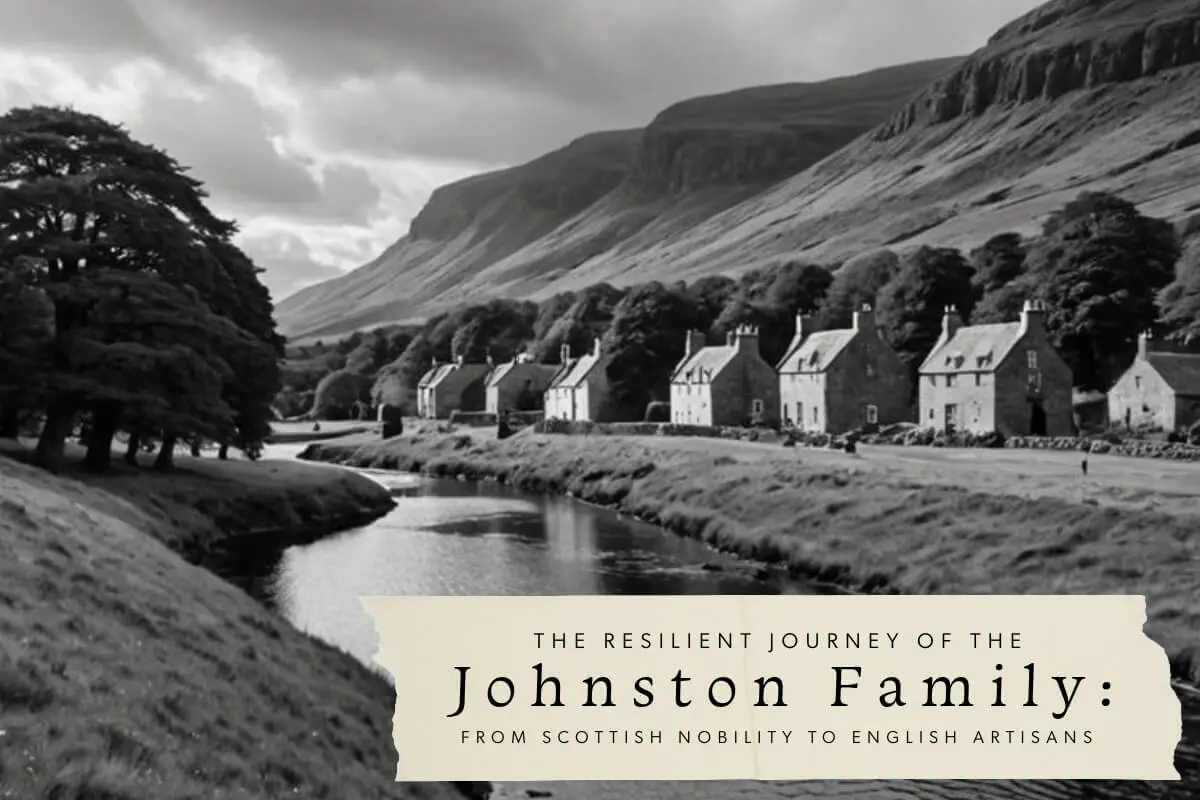Family histories are often tales of courage and perseverance, and the story of the Johnston family is no exception.
Spanning centuries and landscapes, their journey is a vivid reminder of how resilience can shape the destinies of generations. From their roots in Scottish nobility to their adaptation as skilled artisans in England, the Johnstons’ story unfolds against religious upheaval, political strife, and personal reinvention.
Table of Contents
- The Johnston Lineage: From the Stewart Dynasty to the Covenanters
- Tragedy at the Castle: The Fall of the Johnston Patriarch
- A Fugitive’s Resourcefulness: James Johnston’s Survival
- Family Life in England: Building a Legacy
- The Cultural Context: Scotland, England, and the Covenanters
- The Enduring Legacy of the Johnstons
- Related Questions
The Johnston Lineage: From the Stewart Dynasty to the Covenanters
On my father’s side, I am descended from the illustrious Stuart family, the dynastic rulers of Scotland and later England. This royal lineage traces back to James VI of Scotland, who ascended the English throne in 1603 as James I, uniting the crowns of England and Scotland.
However, not all branches of the Stuart family were destined for royal favor. The Johnston (Johnstone) family, who served as loyal subjects and influential figures during the era of Stuart rule, found themselves embroiled in the fierce religious conflicts of 17th-century Scotland.
The Johnston clan lived during this time, and the family was deeply committed to their Presbyterian faith. At the time, Scotland was a land of religious turmoil, as Protestants and Catholics vied for control of the nation’s spiritual and political future.
The Covenanters, a Presbyterian movement dedicated to maintaining Scotland’s religious independence from England, were at odds with the ruling monarchs, who sought to impose Anglican practices on the Scottish church.
The Johnstons, staunch adherents of the Covenanter cause, paid a steep price for their beliefs.

Tragedy at the Castle: The Fall of the Johnston Patriarch
The Johnston Clan lived during a time when religious conviction often dictated one’s fate. Their castle, likely situated in the Scottish Lowlands—where Covenanter and Presbyterian sentiment was powerful—became a symbol of defiance against royal decrees.
Our ancestors, Baron Johnston and his family, were staunch Presbyterians. The fact they were Presbyterians would have meant they were probably associated with the Covenanter movements.
We do not know why Baron Johnston and his sons were beheaded in the 18th Century. Still, we know that after holding a council with his brothers and two elder sons, Baron Johnston was ambushed as they left the safety of their estate—captured, most likely by forces loyal to the crown or forces against the clan, they were executed, their beheadings serving as a grim warning to all.
The repercussions of this tragedy were profound. The Baroness, stricken with grief, succumbed shortly after that, her heart broken by the loss of her husband and sons.
Their youngest son, James Johnston—my great-great-grandfather—was spared this immediate fate only because he was away in another part of Scotland.
His survival came with its challenges, as he became a fugitive hunted by the forces who killed his family. A bounty was placed on his head, forcing him to adopt a cunning disguise and a life of constant vigilance.
A Fugitive’s Resourcefulness: James Johnston’s Survival
James Johnston’s escape from the violent fate that befell his family is a testament to his ingenuity and determination. Disguised as a humble country peddler, he traveled from village to village selling blankets, evading capture while the fires of political unrest raged across Scotland.
His transformation from nobleman to itinerant merchant reveals his survival instincts and the profound shift in his circumstances.
For James, the loss of his family’s estate and the privileges of nobility must have been a bitter pill to swallow. Yet, rather than succumbing to despair, he adapted. His disguise allowed him to blend into the rural landscape, far from the reach of those who sought his life.
This period of hardship likely shaped the resilience and resourcefulness that would define his later years.

Marriage and a New Beginning: The Move to England
After the political climate in Scotland stabilized, James Johnston returned to a semblance of everyday life. He married Isabella Fairbairn, the daughter of a prosperous innkeeper in Edinburgh.
Their union began a new chapter as they decided to leave Scotland and settle in England.
The reasons behind their relocation were likely multifaceted. The confiscation of the Johnston estate meant that James had little to return to in their hometown area of Scotland.
Additionally, the political climate, while calmer, remained fraught with tension. England offered the prospect of a fresh start, free from the stigma of his family’s past and the immediate threats of persecution.
Isabella’s connections may have also influenced their decision to move. As a prosperous innkeeper’s daughter, she brought social standing and practical resources to the marriage. Together, they sought to rebuild their lives in a new land – England.
A Nobleman Turned Artisan: The Reinvention of James Johnston
In England, James Johnston faced the challenge of supporting his growing family without the wealth and status that had once defined his life. Despite his noble lineage, he was now a man of limited means. However, his ingenuity and determination once again came to the forefront.
James became a jeweler in London, channeling his creativity and craftsmanship into a trade that allowed him to provide for his family. Jewelry making, a meticulous and highly skilled craft, requires technical expertise and an eye for beauty and detail.

Over time, James established his workshop at 28 Widegate Street, London, England. James Johnston demonstrated a remarkable ability to adapt and thrive in his new environment.
This transformation from a dispossessed nobleman to a successful artisan speaks volumes about James’s character. He embraced the dignity of labor, proving that resilience and resourcefulness could overcome even the most profound losses. His story is a powerful reminder that reinvention is possible despite seemingly insurmountable obstacles.
Family Life in England: Building a Legacy
James and Isabella Johnston raised a family of six daughters and one son in England. Among their children was their oldest, my great great great grandmother, Isabella Johnston, born on July 26, 1769 in Edinburgh, Scotland. Isabella would later marry Abram Smith, a man of pure English descent born in Winchester on October 7, 1763.
Together, they carried forward the legacy of resilience and determination that defined their family’s story.
For James, the successful establishment of his jewelry business must have been a source of pride, as it allowed him to provide a stable life for his children. However, the loss of his ancestral estate in Scotland likely remained a poignant reminder of the sacrifices made by his family in defense of their faith and principles.
The Cultural Context: Scotland, England, and the Covenanters
To fully appreciate the Johnston family’s story, it is essential to understand the broader historical and cultural context in which they lived. The Covenanters or Presbyterians, to whom the Johnstons belonged, were more than just a religious movement—they symbolized Scotland’s struggle for self-determination and preserving its unique identity.
The Covenanters’ resistance to royal interference in religious matters stemmed from a deep-seated belief in the autonomy of the Scottish church.

Their struggle was not merely a theological one but also a political fight for the rights of ordinary Scots to worship freely. The price they paid for this defiance was steep, as many Covenanters faced imprisonment, execution, or exile.
Reflections on Resilience and Legacy
The James Johnston family’s journey from Scottish nobility to English artisans is a story of profound transformation. It is a testament to the power of resilience, resourcefulness, and adaptability in the face of loss and upheaval.
James Johnston’s ability to reinvent himself after the fall of his family’s estate is a powerful example of how individuals can rise above even the most challenging circumstances.
This story also offers valuable insights into the nature of identity and heritage. While James Johnston’s noble lineage was rooted in Scotland, his life in England marked a departure from the privileges of his past. Yet, he carried forward the values of hard work, integrity, and perseverance, ensuring that his legacy would endure through his descendants.
As I reflect on this family history, I am struck by the enduring relevance of their story. In a world that often demands resilience and adaptability, the Johnston family’s journey serves as both an inspiration and a reminder of the strength within us all.
Whether facing personal challenges or navigating the complexities of our time, we can draw strength from their example, knowing that reinvention and renewal are always possible.
The Enduring Legacy of the Johnstons
Today, the Johnston family’s story is a testament to the enduring power of faith, courage, and resilience. From the tragic fall of a noble house in Scotland to the rebuilding of a life in England, their journey reminds us of the strength of the human spirit.
As descendants, we carry forward their bloodline and the values and lessons they embody.
Their story, rooted in history yet resonant with timeless themes, offers a window into the struggles and triumphs of those who came before us. It is a narrative of survival, reinvention, and hope—a legacy that inspires and guides us as we write chapters.
The Hummel Family is a website all about Family History research. We focus on Swedish, German, English, Scottish, and American Genealogy. We also discussed Asia and China, as we had ancestors who spent many years in China.
You are welcome to join us and become part of our community by signing up for our FREE newsletter, The Hummel Family; sign up by clicking here.
Check out our Youtube Channel, Family History Buzz, by clicking here.
Related Questions
Does Sweden Have Census Records?
Sweden does not have a census collection or records like the United States. The Sveriges Befolkning Records are usually translated from Swedish into English as Sweden’s Census Records. Technically speaking, the Sveriges Befolkning Records is not an official census record. The data was collected from the local Swedish Lutheran parish’s household examination records, not by a census bureau or another government organization.
You can discover more by reading Does Sweden Have Census Records? Tips To Finding Your Swedish Family Roots by clicking here.
Why Do So Many Swedish Last Names End in Son?
When doing your Swedish family history research, one of the most important things you need to understand is how Swedish last names work. Many Swedish last names end with “son or “sson” as they are patronymic names.
You can learn more by reading Why Do So Many Swedish Last Names End in Son? by clicking here.
How Reliable Is The Genealogy Website FamilySearch.org?
FamilySearch.org is a very reliable genealogy website. It is considered one of the best genealogy-focused research websites in the world. One of the best things about this is that the website is free for everyone, regardless of affiliation or religion. The website has millions of genealogy records, and the records have been updated daily. It is also a collaborative website, and you may find relatives ready to work on your family line so you can tap into the work they have already done.
You can learn more by reading How Reliable Is The Genealogy Website FamilySearch.org? by clicking here.
